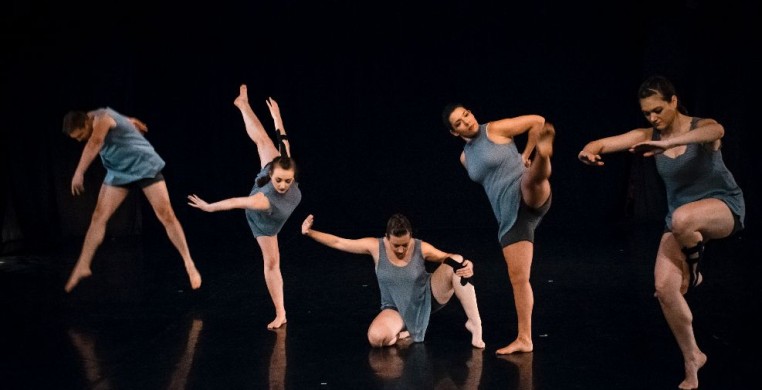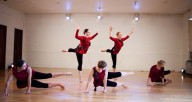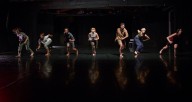Much of Esoteric Dance Project (EDP)’s evening at Hamlin Park Fieldhouse is about numbers. Under the title “Ten,” this group’s tenth production across seven seasons highlights six dancers in three works, all premieres, sewed together for a cool 60 minutes of dancing.
And that makes sense – all those numbers. Husband and wife co-directors Brenna Pierson-Tucker and Christopher Tucker are sometimes analytical to a fault, but never waver in putting forward work that is technically demanding, choreographically sound, and beautiful to look at. “Ten” easily follows the lead of EDP’s other programs, but lacked the clean crispness audiences might expect from this group.
That’s not necessarily a bad thing; the past few seasons have grown increasingly personal, with Tucker ditching his reliance on analytical themes and numerical codes (which he uses to great effect) in 2015, opting instead to map his experience with cancer through dance. Pierson-Tucker now follows suit with “Ten’s” final piece: “Bent and Broken into a Better Shape.” Three of the piece’s five dancers (Allie Buchweitz, Rebecca Robertstad-Hernandez, Cayla Roberts, Johanna Seidel and Tucker) wear therapeutic KT tape across the joints that ail them – elbow, knee, and ankle – in this choreographic foray into the restrictions and possibilities presented to dancers who experience injury. The other two, the ones who don’t have any visible tape, are plagued by back injuries – as spelled out by each dancer in breathy monologues after a concise opening passage dancing toward us from Hamlin’s deep upstage. Solos, duos and small groups explore their injured bodies by initiating gestures or following the trajectory of that particular limb, in a too obvious way, while the group dancing, and the creative piles they make on top of one another, make a greater impact overall.
The first piece, “What is Between Us” by Tucker, starts with three dancers (Buchweitz, Robertstad-Hernandez and Roberts) stacked up like bricks. As the sounds of gamelan ting in the background, matched by earth-toned, Balinese-inspired capris, each methodically unfolds herself from the pile to lie in a diagonal line. And then it just goes, with elaborate partnering and challenging passages of pirouettes that, like “Bent and Broken” maybe asks a bit too much of these dancers. It’s clear that both Tuckers value classical technique in their choreography, and despite the solid training and valiant efforts of this cast, it didn’t come together quite like it was supposed to.
But maybe that’s ok. In some ways, I’m grateful to see things a bit tousled by this group, because it gave the petit audience a chance, for once, to see some transparency, vulnerability. That was no less evident in the middle piece, “2=1+1=Two,” which offers an intimate peek into the private lives of this husband and wife, who’ve shared a life together since they were teenagers.
The pair enter in matching pajamas and quickly descend into a cuddle puddle upstage, taking turns being the big spoon before embarking on adventurous, rolly-polly bits of partnering that slither all around, and close to the ground. The work is strongest when each performs identical simultaneous solos facing back to back. As choreographers, Pierson-Tucker and Tucker match so well it can be difficult to distinguish who made what, but in performance, these are very different dancers. Pierson-Tucker, with her compact and powerful stature, is as comfortable lifting her lanky husband as he is her, and this equitable approach to partnering is present in all three pieces. Sometimes it works, and sometimes it doesn’t, but that’s life, right? Intimacy is messy, and sometimes you end up accidentally elbowing your partner in the face or sneezing at the wrong time (neither of those things happened… it’s just a metaphor). This duet – meant to illustrate cohesion, and also duality and individuality – is careful and measured in some moments, and a beautiful mess in others. How refreshingly uncharacteristic.
Lauren Warnecke is the dance writer and critic for the Chicago Tribune.



